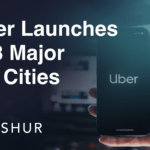
How to make your fuel (and your money) go further
The queues may have gone down now, but the recent fuel crisis has shown just how quickly things can get out of control. So, what can you do now to make your fuel and your money go further, if and when the next shortage rolls around.
It was only a month ago that drivers went from filling up as normal to having real issues – as soon as local garages were restocked, just hours later they were sold out. Some drivers had to take time off work while waiting for the panic buying to die down, while others were limited to how much petrol and diesel they could buy.
The problems were particularly severe in London and the South East.
Research from the Petrol Retailers Association in early October 2021 found that 12% of filling stations in these areas were dry, and 17% had one grade of fuel. Some 71% of forecourts had both grades of fuel, compared with 90% of forecourts outside of London and the South East.
No one wants a repeat of that. But while it’s still fresh in our memory, it’s worth taking what steps you can to make your fuel go further, whether that’s driving in the most fuel-efficient way, or saving at the pump.
Here are our top tips to keep you driving and earning, fuel crisis or not.
1) Maintain your vehicle
Looking after your private hire car, delivery van, or motorbike with regular maintenance and servicing means your vehicle is more efficient, which in turn helps with fuel consumption.
Some vehicles require routine maintenance at specific points, such as every 15,000 miles, and you may need to carry these out as part of your warranty. Check the essentials like oil and water, as well as things like air filters, and that your headlights and brake lights are working.
Tyre pressure is another key thing to keep an eye on – both underinflated and overinflated tyres can impact fuel efficiency. For example, if you’re a private hire driver that does a lot of airport runs, heavy luggage, and more passengers means tyres should be inflated to the maximum recommended pressure.
2) Avoid dead miles
When supply is short (and even when it isn’t), you don’t want to waste time, money, and fuel on driving long distances in between pick-ups.
When you’ve completed a ride and are dropping off a passenger, allow time for local work to come in before accepting a job that’s miles away. The same advice goes for chasing Surge fares on the other side of town – while it can be tempting, it’s usually better for your tank and your wallet to take the work where you are.
For those in delivery, planning your route ahead of time should help with making your shift as efficient as possible, rather than losing time crisscrossing between different drop-offs.
3) Go easy on the accelerator
Excessive speed is one of the factors that eats up the most fuel – it’s much more efficient to pull away at a steady pace.
One tip here is to imagine a cup of tea on your dashboard. If you’re accelerating hard enough that the tea could spill, ease up on the pedal. (Don’t try this with your actual cup of tea/coffee though – we take no responsibility if you do end up spilling it!)
Part of fuel efficiency is keeping track of your miles per gallon, or MPG. To get a high MPG figure the advice is to drive in the highest gear possible while staying within the speed limit.
As most of your work is likely to be in and around urban areas, it’s recommended that you change up through the gears as quickly as you can with the lowest revs possible, typically at around 2,000 rpm. This is because the faster an engine spins, the more fuel it uses.
4) Keep it smooth and steady
Good fuel economy relies on keeping the car moving at the right speed. Of course, you can’t control the traffic conditions (if only!) but where possible, try to avoid slowing down and then accelerating again, which uses more fuel.
Stay in gear when slowing down so that the fuel cut-off switch kicks in, so that little to no fuel is used while braking.
Driving in hilly areas also means fuel economy can take a hit. One tip here is to accelerate slightly before you reach a hill, then ease off as you drive up. This should help reduce fuel consumption.
5) Avoid stop-start driving
Following on from tip #4, if you’re driving in rush hour, or in heavy traffic, this will mean more stop-starting.
Of course, the best way to save on petrol and diesel is to try and avoid hitting traffic altogether. Seasoned drivers will instinctively know which roads to avoid and when, but using traffic apps can also help.
As well as the Driver app for those on Uber, apps like Waze are updated by fellow drivers in real-time, allowing you to see things like road closures and speed traps.
6) Turn off the air-con and heating where you can
Air conditioning uses engine power and increases fuel consumption as a result. The same goes for heating.
Rider comfort is important too, so this isn’t about making riders freeze in the depths of winter. But if you can go without using the air con and heating, this will help with fuel economy. Covid safety measures mean windows are generally being kept open at the moment anyway, but this does have the added bonus of making your vehicle more fuel-efficient too.
7) Top-up to fill up
Full tanks were like the holy grail during the recent fuel shortage. If your budget allows, it’s worth filling up your tank at the petrol station – fewer trips to get fuel ultimately means more time to earn.
Linked to this, consider whether you could be saving more on the cost of petrol and diesel. One of the knock-on impacts of the fuel shortage was the rocketing price of petrol, with some drivers paying around £1.50 a litre. This compares to an average of £1.35 a litre for the month of September, according to the AA.
Research from consumer body Which? found that supermarkets came out cheaper based on the average price per litre compared with other fuel forecourts.
Supermarkets and places like BP and Shell also offer loyalty cards, where fuel points count towards discounts, cashback, and vouchers.
Ultimately, how far your fuel goes will depend on the vehicle you drive. If the fuel crisis has prompted you to start thinking seriously about getting an electric vehicle, have a read of our blog on the benefits of driving an electric vehicle for private hire.
At INSHUR, we want to help our drivers get the most out of their time. To get an online quote in minutes and get your private hire insurance sorted quickly, check out our coverage options today. We cover delivery drivers too.
Sources:
https://www.bbc.co.uk/news/business-58830954
https://www.uber.com/newsroom/how-to-minimize-wear-and-tear-on-your-vehicle/
https://www.rac.co.uk/drive/advice/how-to/fuel-saving-tips/
https://www.uber.com/en-GB/blog/tips-for-fuel-efficient-driving/
https://therideshareguy.com/how-to-save-money-on-gas/
https://www.which.co.uk/reviews/new-and-used-cars/article/money-saving-driving-tips
https://www.theaa.com/driving-advice/driving-costs/fuel-prices
Related Articles:






